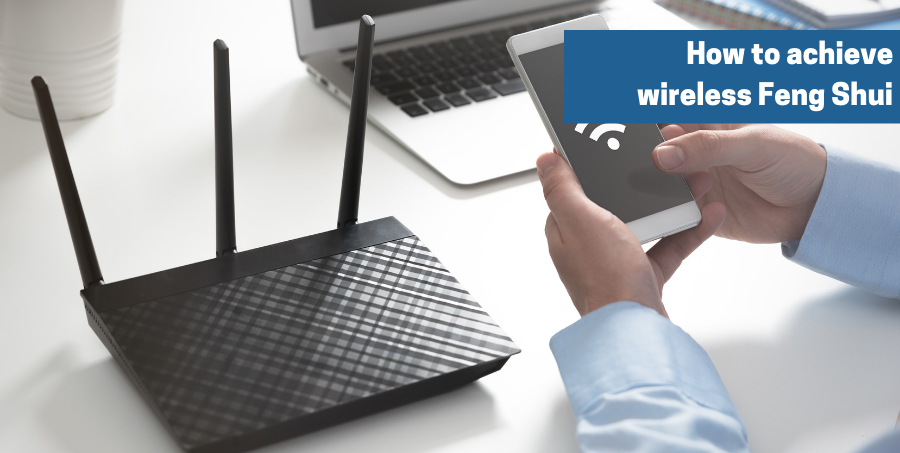How to achieve wireless feng shui – tips to boost your wireless router signal

What can be done if your Wi-Fi seems slow or unreliable in some of the rooms in your home? The simple answer is to make sure that you locate your router in the optimal position for maximal coverage. This is not quite as straightforward as it may sound, so here’s a quick guide on how to set about pinpointing that optimal location.
The best place probably isn’t where the installation technician put it
Firstly, don’t be misled into thinking that because your installing technician has positioned the router near a wall closest to the cable that they’ve just run into your home, this must mean that it’s the best spot. The reason for the location is more mundane: technicians need to get the job done ASAP to get on to the next installation, so they’ll put the router close to the line in your home for their convenience, not yours. Finding the optimal position for it is your job, not theirs.
Your Wi-Fi is almost certainly slow in some areas of your home because wireless signals just don’t travel very far and are easily disrupted by common obstacles such as walls or bookshelves. This is often your cue to find a better location for the router.
The pros and cons of central positioning
You’ll find plenty of online advice urging you to place your router in a central position in your home. On the face of it, this seems reasonable, as the aim is to get a more equal distribution of the signal around the house or apartment – but it’s not always true.
Take the commonplace example of a ground floor composed of a living room, kitchen and garage. If the kitchen is physically the central location, think again: microwaves can play havoc with Wi-Fi signals. Think more about where most of your devices live in your home. You may not need coverage in the garage, for example (unless you have, say, a Wi-Fi-operated garage door).
It’s probably more practical to think of the most important, as opposed to the most central, place in your home: putting your router in the centre of the most important area, where most of the devices are positioned, will be more effective than the physical centre if the two don’t coincide.
Multi-storey homes
Again, think about which is the most important (i.e., device-laden) floor, or where devices are used most frequently. Picture your home as a kind of sphere: the router will reach more devices evenly if it’s at the core, so if you position it on the floor of the basement, for instance, half of the coverage will simply sink into the foundation.
If you do need signals to reach different levels of your home relatively evenly in, say, a two-storey home, the optimal location is either on the floor of the upper storey or fixed to the ceiling of the lower storey.
Always resist the temptation to conceal the router behind books or inside a drawer. If you need it to get through walls, extra barriers really won’t help. Keep it in the open, even though it’s hardly the most attractive ‘décor’ to put on display.
Uncouple the router from the modem
These two pieces of kit don’t have to be joined at the hip. If they are because that’s how they’ve been manufactured, you’ll do well to invest in a separate router. You’ll need a long Ethernet cable to connect the modem to a second router positioned in the best location in your home. This is one of the most reliable data connections out there, so investing in a suitably lengthy Ethernet cable is a worthwhile step.
What if you’re a ‘cable-phobe’?
It’s true that many of us really don’t like looking at cables snaking across floors or walls in plain sight. The good news, however, is that if you need additional cables to get your Wi-Fi functioning more smoothly, you can hide them relatively easily, either under the floor or behind walls (especially easy if you’re running them behind dry walls). Wall plates are an excellent means of concealing cables behind wall partitions or within cabinets, leaving your home looking uncluttered, cable-free and restful.
There’s a good range of Ethernet and other cables as well as in-wall cable kits available from the UK’s largest supplier of cables, plugs and wall plates, EuroNetwork.

